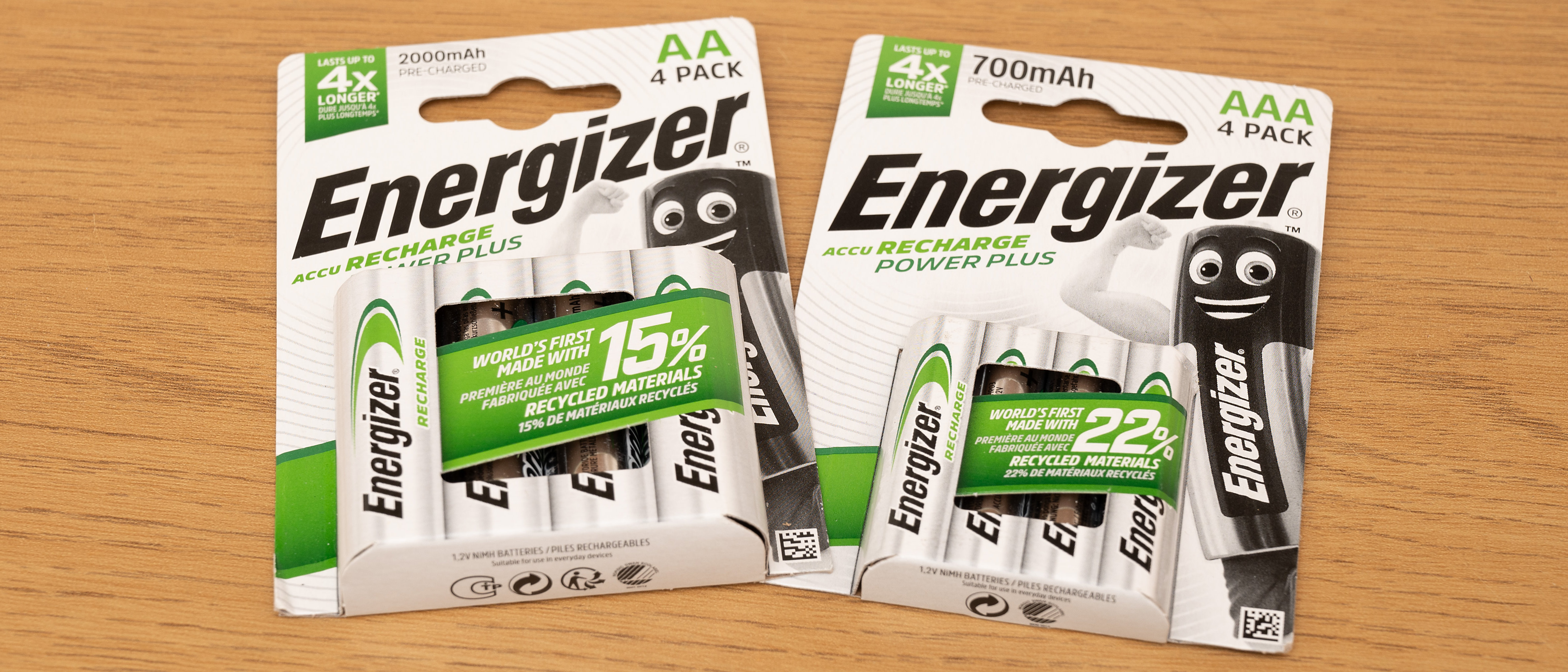Digital Camera World Verdict
These rechargeable Ni-MH AA and AAA batteries come from a big and trustworthy name, and Energizer has gone the extra mile to make them even more eco-friendly than most. They’re very nicely turned out and perform well, although the outright stamina falls short of some of the more high-capacity competitors on the market, which are also cheaper to buy. Even so, they performed well in our tests and are pretty good value at the price.
Pros
- +
Trusted brand
- +
Good eco credentials
- +
Plastic-free packaging
Cons
- -
Modest capacity
- -
Unspecified percentage charge held
- -
Pricier than some competitors
Why you can trust Digital Camera World
The Energizer Recharge Power Plus AA and AAA batteries are of the new breed of Ni-MH batteries. As such, they’re not only free of the ‘memory effect’ for which older Ni-CAD batteries were notorious, but also hold their charge for many months or even years. That’s a major plus point for using popping these batteries into gadgets that you might only use once in a while.
As you’d expect from a battery manufacturer of Energizer’s pedigree, the ‘Recharge’ range includes many popular sizes including AAA, AA, C, D and rectangular 9V batteries. We put 4-packs of the ‘Power Plus’ 2000mAh AA and 700mAh AAA batteries to the test. Here’s how we got on.
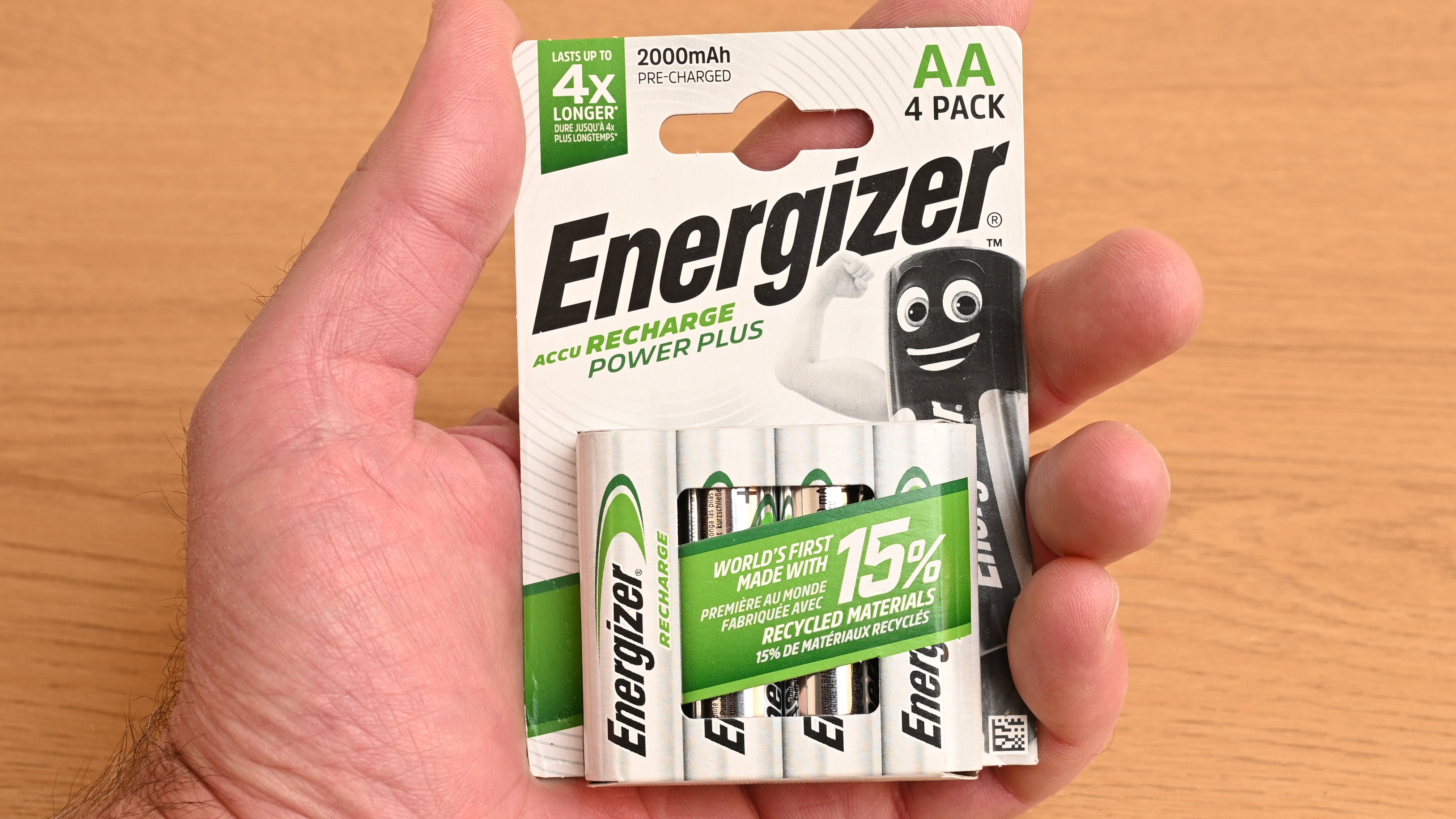
Energizer Recharge Power Plus: Specifications
Type: NiMH
Size: AA / AAA
Voltage: 1.2V
Capacity: 2000mAh (AA) 700mAh (AAA)
Charge held: 1 year
Recharge up to: Hundreds of times
Energizer Recharge Power Plus: Key features
These Energizer batteries follow a trend set by Eneloop, subsequently acquired by Panasonic. As such, and like almost all modern designs of Ni-MH batteries, they’re engineered to have a low self-discharge rate. That’s good news as far as we’re concerned, as it avoids the frustration of fully charging a set of batteries only to find that they’ve gone flat in storage when you come to use them a few weeks down the line.
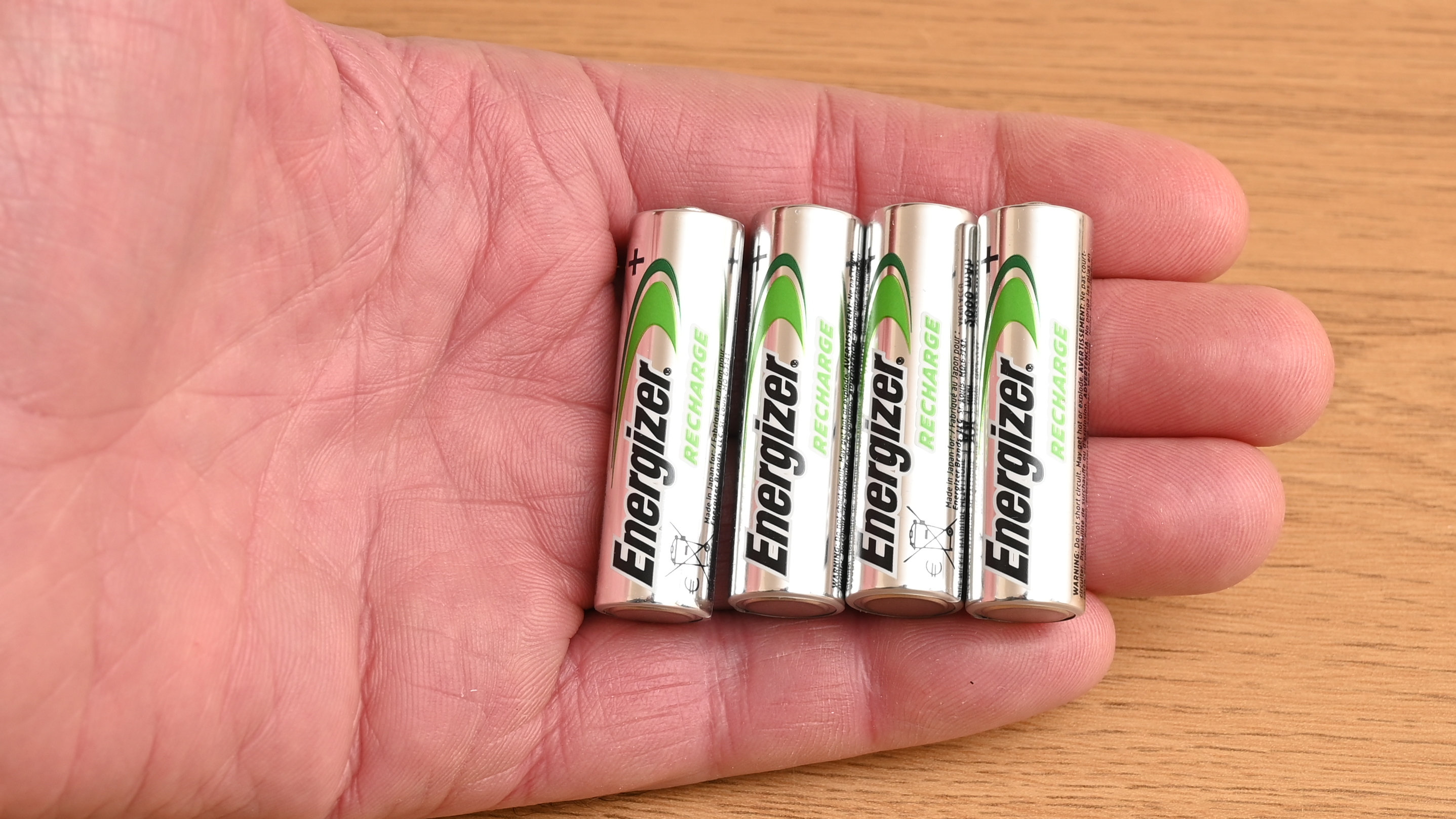
Unlike some manufacturers, Energizer doesn’t specify how much charge will be retained when the batteries are stored for long periods. Instead, they only say that they’ll stay charged for over a year. Both of the AA and AAA sets of Energizer batteries that we bought certainly had a lot of charge in them when they arrived. That’s not the case with some competitors, which are only charged to about 20 per cent of their capacity when manufactured and shipped.
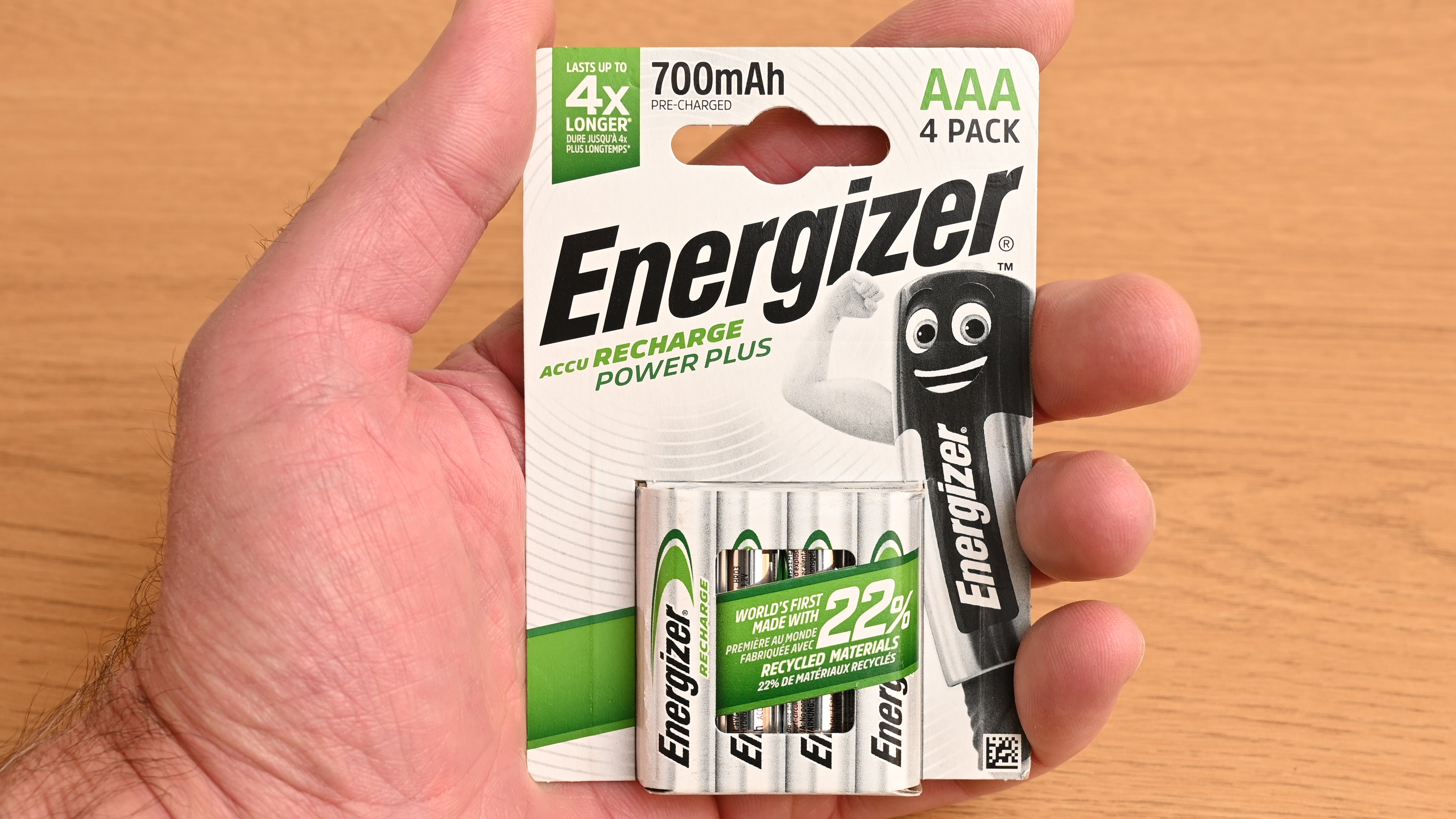
The capacities of the batteries themselves aren’t particularly generous, at 2000mAh for AA and 700mAh for AAA. That’s exactly equal to the standard Panasonic Eneloop AA and a little down on the competing 800mAh AAA. It’s worth noting that while the Energizer batteries are less expensive to buy than the Panasonic Eneloop and higher-capacity Panasonic Eneloop Pro, they’re also pricier than EBL, HiQuick and Powerowl batteries, all of which have class-leading capacities of 2800mAh for AA and 1100mAh for AAA.
A key feature for the eco-conscious is that the Energizer AA batteries are advertised as the world’s first to be made with 15 per cent recycled materials, and that’s bumped up to 22 per cent for the AAA batteries. Energizer has also avoided the use of blister packs or any plastic in the retail packaging, which is made entirely from easily recyclable cardboard.
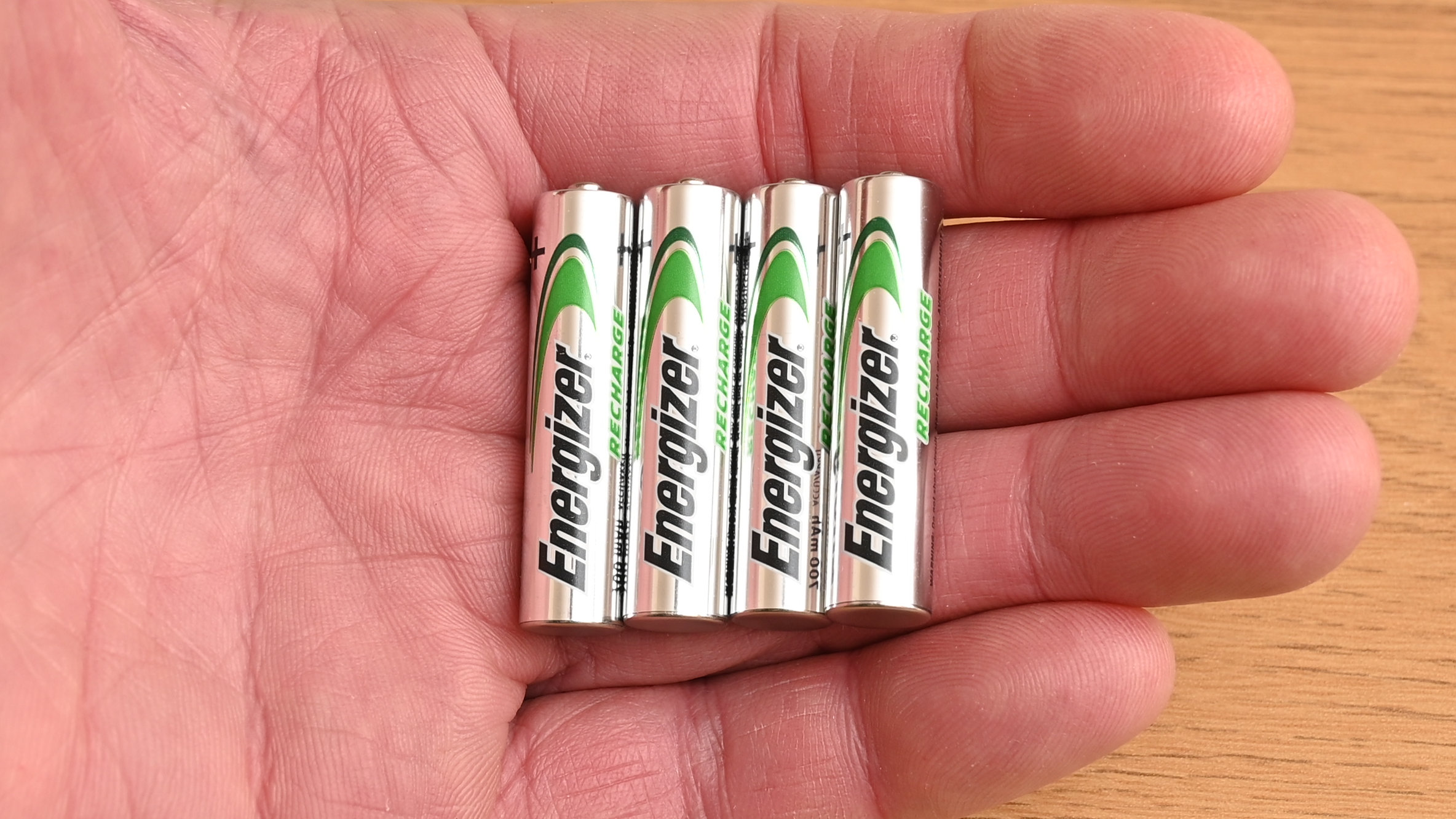
Energizer Recharge Power Plus: Performance
From a performance standpoint as well as an ecological consideration, an important factor is how many times you can use a rechargeable battery and charge it up again, over its lifetime. Some manufacturers of high-capacity Ni-MH batteries claim that you can recharge them up to 1200 times. Energizer quote a figure of 1,000 times for some of its batteries but for the ones on test, they only claim a more vague ‘hundreds of times’ for the AA and 700 times for the AAA. Even so, that should keep you going for a few years, and Energizer quote a maximum lifespan of 5 years under ‘typical usage patterns’.
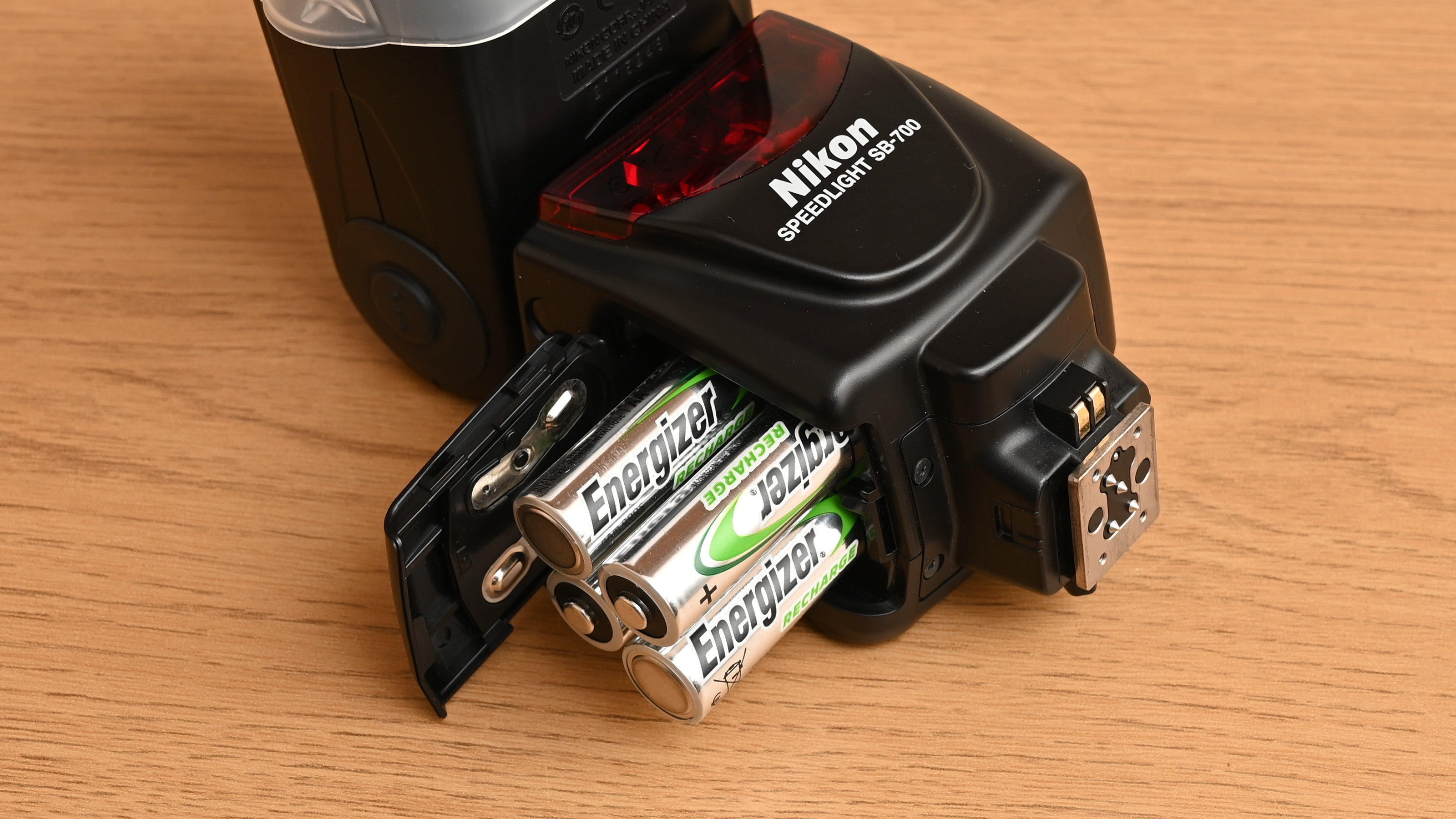
For testing the AA batteries, we put a fully charged set of four in a Nikon Speedlight SB-700 and fired a series of full-power flashes over a few hours. Recycling speed between flashes started off very fast at 2.2 seconds, ahead of the 2.5 seconds we often experience with Ni-MH cells. The speed dropped to a more usual 2.5 seconds after 150 flashes, and the batteries ran out after 250 flashes. For higher-capacity AA batteries, we’re used to seeing a total number of full-power flashes of around 300. And even so, the Energizer rechargeables last more than twice as long as alkaline single-use batteries, which tend to last for around 115 full-power flashes in the same testing conditions.
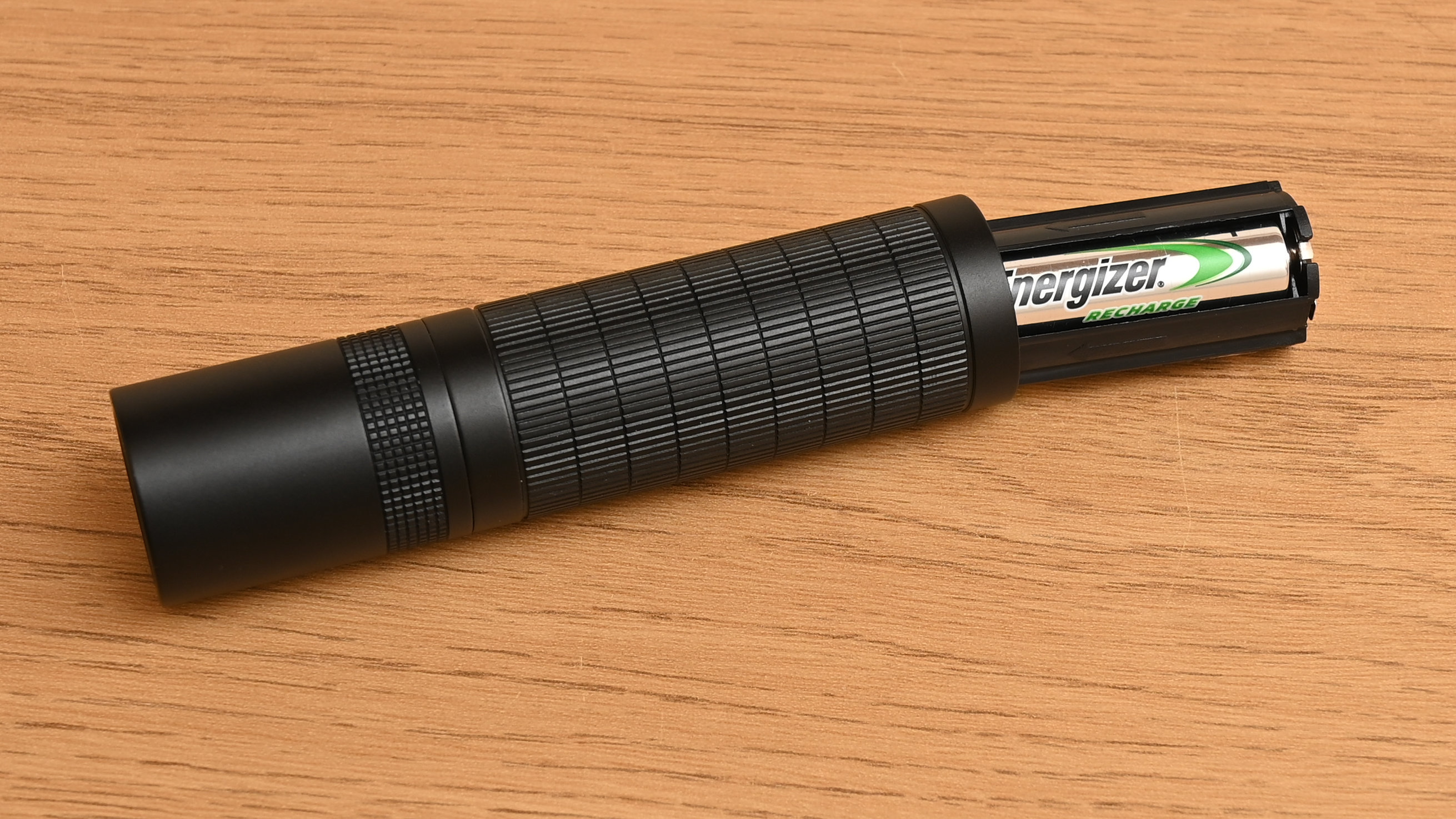
Next up, we put a set of fully charged Energizer 700mAh AAA batteries into a high-power flashlight and ran it constantly. The batteries lasted for just under 55 minutes, whereas EBL, HiQuick and Powerowl 1100mAh AAA batteries lasted for around 85 minutes. Again though, the Energizer rechargeables still lasted longer than a set of single-use alkaline batteries, which kept going for 40 minutes.
Energizer Recharge Power Plus: Verdict
These rechargeable Ni-MH AA and AAA batteries come from a big and trustworthy name, and Energizer has gone the extra mile to make them even more eco-friendly than most. They’re very nicely turned out and perform well, although the outright stamina falls short of some of the more high-capacity competitors on the market, which are also cheaper to buy. Even so, they performed well in our tests and are pretty good value at the price.

Matthew Richards is a photographer and journalist who has spent years using and reviewing all manner of photo gear. He is Digital Camera World's principal lens reviewer – and has tested more primes and zooms than most people have had hot dinners!
His expertise with equipment doesn’t end there, though. He is also an encyclopedia when it comes to all manner of cameras, camera holsters and bags, flashguns, tripods and heads, printers, papers and inks, and just about anything imaging-related.
In an earlier life he was a broadcast engineer at the BBC, as well as a former editor of PC Guide.
